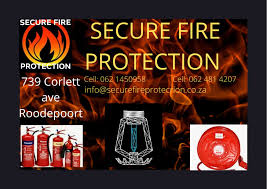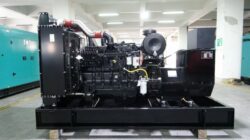The Role of Fire Extinguisher Inspection in Fire Prevention Plans
Fire safety is a topic that should be taken seriously by everyone. Fires can happen anywhere, at any time, and they pose a significant threat to life and property. One essential aspect of fire safety is having the right tools in place to respond quickly and effectively in case of a fire. Fire extinguishers are one such tool that can make a crucial difference in preventing small fires from turning into disastrous ones. However, merely having a fire extinguisher on hand is not enough; regular inspection and maintenance are equally important. This article will explore the vital role of fire extinguisher inspection in fire prevention plans.
Why Are Fire Extinguishers Important?
Fire extinguishers are essential fire safety devices that are designed to suppress or extinguish small fires. They come in various types, each suitable for specific types of fires (e.g., Class A, B, C, D, or K fires). Having the right type of fire extinguisher readily available can be the difference between a minor incident and a major catastrophe. Here are some reasons why fire extinguishers are crucial in fire prevention plans:
Immediate Response: Fire extinguishers allow individuals to respond immediately to a fire, potentially preventing it from spreading and causing more extensive damage.
Reduced Fire Damage: Using a fire extinguisher promptly can help contain a fire, limiting the extent of damage to property and possessions.
Life Safety: In some cases, fire extinguishers can be used to create a safe path for evacuation, especially in smaller fires or confined spaces.
Emergency Preparedness: Fire extinguishers are a fundamental part of an overall fire safety plan, ensuring people are prepared to handle fire emergencies.
Legal Compliance: Many local and national building codes and regulations require the installation of fire extinguishers in certain facilities.
The Importance of Fire Extinguisher Inspection
Regular inspection of fire extinguishers is a fundamental component of any comprehensive fire prevention plan. These inspections ensure that fire extinguishers are in good working condition and ready for use when needed. Here are some key reasons why fire extinguisher inspection is crucial:
Functionality: Over time, fire extinguishers can become less effective due to factors such as corrosion, leakage, or damage. Regular inspection helps identify and address these issues promptly.
Accessibility: Inspections ensure that fire extinguishers are easily accessible, with clear visibility and unobstructed access, so they can be used quickly during an emergency.
Proper Maintenance: Inspections involve checking critical components like pressure gauges, seals, and safety pins to ensure they are functioning correctly.
Correct Type: Fire extinguishers must be the appropriate type for the specific fire hazards present in a given location. Inspections confirm that the correct extinguishers are in place.
Compliance: Regular inspections help ensure compliance with local fire codes and regulations, which often mandate the maintenance of fire safety equipment.
Types of Fire Extinguisher Inspections
Fire extinguisher inspections can be broadly categorized into two types: visual inspections and maintenance inspections.
Visual Inspections
Visual inspections are quick, routine checks that anyone can perform. They involve looking for obvious signs of damage or tampering without the need for specialized tools. Visual inspections should be conducted monthly and include the following steps:
Location: Ensure the fire extinguisher is in its designated location and easily accessible.
Condition: Check for visible damage, such as dents, corrosion, or leakage.
Pressure Gauge: Ensure that the pressure gauge needle is in the green or “charged” zone.
Safety Pin and Tamper Seal: Make sure the safety pin is in place and the tamper seal is intact.
Expiry Date: Verify that the fire extinguisher has not passed its expiration date.
Operating Instructions: Ensure that the operating instructions are legible and facing outward.
Maintenance Inspections
Maintenance inspections are more comprehensive and should be carried out annually by a qualified technician or a professional fire safety service provider. These inspections involve a detailed examination of the fire extinguisher’s internal components and include:
Checking the Hose and Nozzle: Ensuring the hose and nozzle are free from blockages or damage.
Inspecting the Valve Assembly: Examining the valve assembly for corrosion, leaks, or other issues.
Weighing the Extinguisher: Weighing the extinguisher to confirm that it has the correct amount of extinguishing agent.
Testing the Discharge Mechanism: Testing the discharge mechanism to ensure it functions correctly.
Recharging or Replacement: Based on the inspection results, the technician may recommend recharging or replacing the fire extinguisher if it is no longer serviceable.
The Consequences of Neglecting Fire Extinguisher Inspections
Neglecting fire extinguisher inspections can have severe consequences in the event of a fire emergency. Here are some potential outcomes of not regularly inspecting and maintaining fire extinguishers:
Ineffective Fire Suppression: A neglected fire extinguisher may fail to work when needed, allowing a small fire to escalate into a larger, more dangerous blaze.
Property Damage: Without functioning fire extinguishers, property damage can be extensive, leading to costly repairs or even total loss.
Legal Consequences: Failure to comply with fire safety regulations can result in fines or legal liability if a fire-related incident occurs.
Risk to Life: Inadequate fire extinguisher maintenance can jeopardize the safety of individuals in the building, as they may not have the means to suppress a fire and escape safely.
Increased Insurance Costs: Insurance providers may raise premiums or deny claims if it is determined that fire safety equipment was not properly maintained.
Creating a Fire Extinguisher Inspection Plan
To ensure that fire extinguishers are regularly inspected and maintained, it is essential to establish a systematic inspection plan. Here are the steps to create such a plan:
Identify Responsible Parties: Designate individuals or a team responsible for conducting monthly visual inspections and arranging for annual maintenance inspections by professionals.
Schedule Inspections: Set up a schedule for monthly visual inspections and annual maintenance inspections. Ensure that these inspections do not interfere with daily operations.
Record Keeping: Maintain a record of all inspections, including dates, findings, and actions taken. This documentation is essential for demonstrating compliance with fire safety regulations.
Training: Ensure that individuals responsible for inspections are trained in fire extinguisher use and inspection procedures.
Emergency Procedures: Develop and communicate clear procedures for using fire protection services Sydney in case of a fire emergency. Training employees on these procedures is vital.
Conclusion
Fire extinguishers are indispensable tools in the fight against fires, but their effectiveness relies on regular inspection and maintenance. Neglecting these crucial tasks can have severe consequences, including property damage, legal trouble, and risks to life. To uphold a strong fire prevention plan, it is imperative to conduct both visual and maintenance inspections as recommended. By doing so, you contribute to a safer environment for yourself, your colleagues, and your community. Remember, fire safety is everyone’s responsibility, and proper fire extinguisher inspection is a significant part of fulfilling that duty.





















































